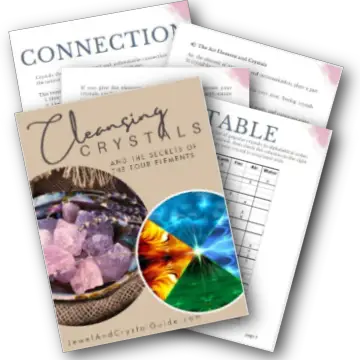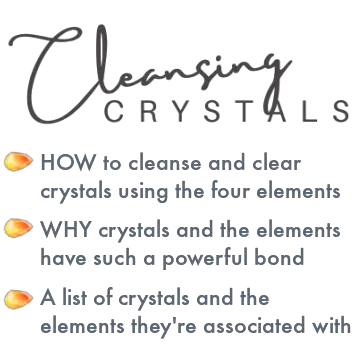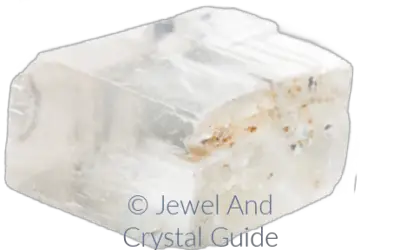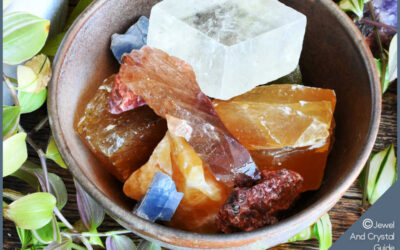Some amethysts are a soft purple and others have a vibrant, royal color. So what makes amethyst purple and why do these color variations happen?
Iron is the impurity that makes amethyst purple, under the right conditions. The more iron there is, the deeper purple it can become. But other things affect the color too, such as where the crystal is mined, how it forms, and who works on it.
In fact, there are 8 things that affect the shade and depth of coloring in an amethyst, as well as how long an amethyst keeps its color.
In this blog post, you’ll:
- Find out how amethyst forms
- Discover what’s needed to make purple amethyst (and how to restore its original color)
- Understand the 8 things that make or change an amethyst’s color
Iron gives amethyst the potential to turn purple
To understand why amethyst is purple, we need to know where it comes from.
Amethyst starts off as pure quartz, which is also known as clear quartz. Pure quartz is clear or transparent, so it has no color.
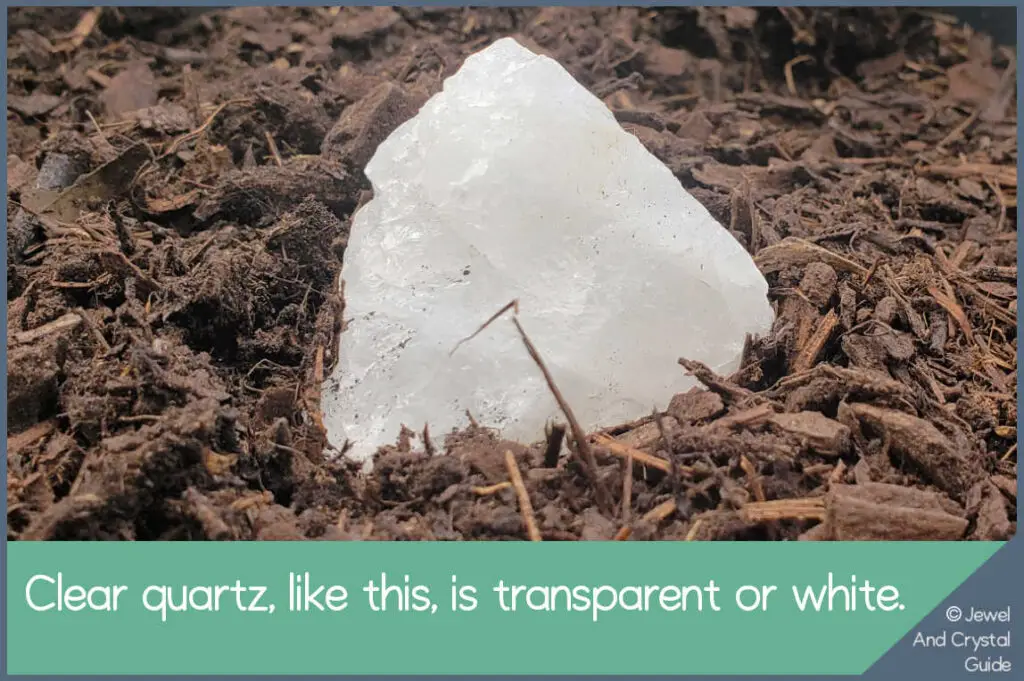
If there are impurities in the quartz when the crystal forms, the quartz’s color has the potential to change depending on the type of impurities. Different impurities produce different colors.
If the quartz does change color, it gets a new name based on the final color and the impurities that made that color.
For example, the right combination of the impurities titanium, manganese, and iron, under the right conditions, make quartz pink, so it becomes “rose quartz”. But pure quartz with the impurity hematite in it is also pink, and this is called “pink amethyst”.
You can read all about the differences between pink quartz and pink amethyst in this blog post.
When iron is the main impurity, quartz has the potential to turn purple and become an amethyst under the right conditions. So an amethyst is essentially a purple quartz crystal.
Iron is called an “impurity” because it isn’t found in pure, colorless quartz. And even though there’s very little iron in amethyst, there’s enough to make it possible to turn purple.
The more iron there is, the deeper purple the quartz can become. In fact, some quartz turns such a dark purple that it looks wine red or even black.
If you want to know how crystals get their colors, read this article next.
But radiation makes amethyst purple
No matter how much iron is in quartz, it won’t turn purple unless it’s exposed to radiation.
Many rocks have radioactive elements in them, such as radium and uranium. When quartz is exposed to these elements, there’s a reaction with the iron and the quartz turns purple.
If clear quartz contains iron but it’s never exposed to radioactive elements, it remains colorless and continues to be clear quartz, until it changes color (if ever).
Radiation even works on dull and faded amethysts. Expose an amethyst to radiation, like X-Rays, and you can make it purple again.
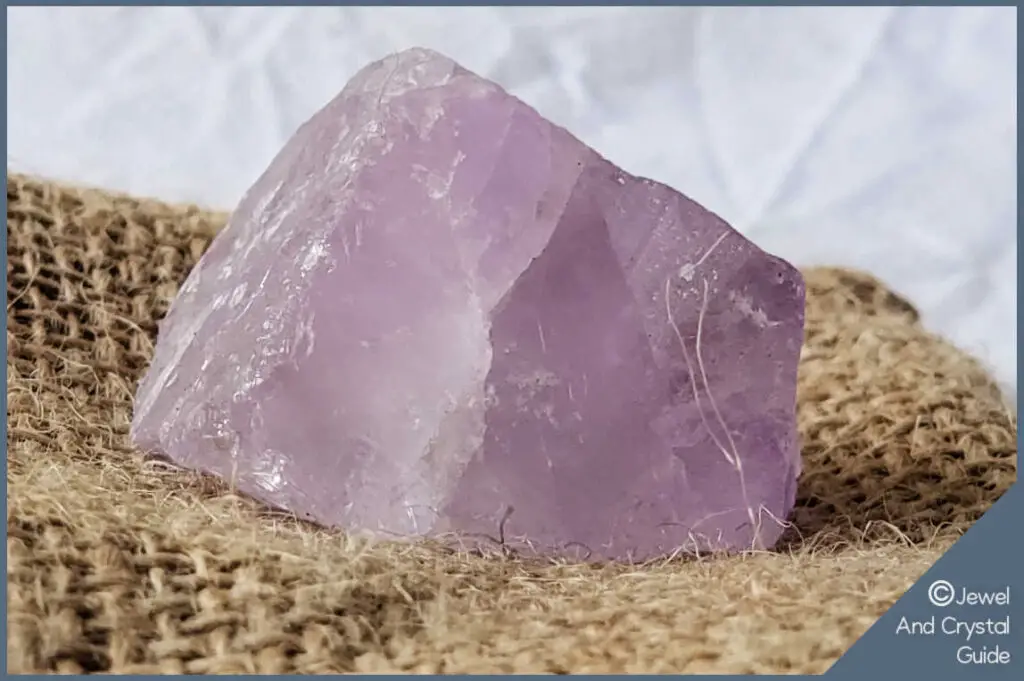
Heat and UV light make amethyst lighter
Too much UV light and high heat rob an amethyst of its color.
Any prolonged exposure to either of these, such as sunlight or high temperatures of up to 788 °F (420 °C), makes an amethyst fade.
At first the amethyst becomes lighter. Then it loses all its purple color and can even turn gray.
But don’t let things get any hotter than this or you’ll no longer have an amethyst in your hands…
Extreme heat turns amethyst into other colors and crystals
Very high heat causes such a reaction with the iron in the crystal that it changes an amethyst’s color – sometimes so drastically that it becomes a different crystal!
When amethyst is kept below 788 °F (420 °C), it keeps its purple coloring, though it starts getting lighter as we turn up the heat and prolong exposure.
Heat the crystal to 1 450 °F (420 – 440 °C) and it turns into green quartz, called prasiolite.
Heat it up even more, above 1 450 °F (440 °C), and amethyst turns to citrine, a yellow or brown quartz.
(source)
Impurities create shades of purple
The impurity iron gives amethyst its purple color but it also creates different shades of purple in the crystal.
As amethyst is created underground over millions of years, iron gets added in layers. Sometimes more iron is in one layer and sometimes less iron finds its way into the next layer.
Variations in the levels of iron create color variations in the final crystal. Areas with more iron are darker than areas with less iron.
Amethyst that’s taken from the ground usually has a white base, where there’s no iron, but this white base is often removed before the crystal is put on the market.
Smaller amethysts are usually darker
Quartz is mainly made up of silica, which is a combination of silicon and oxygen. There’s a lot of silica in the Earth’s crust, and it’s carried around by very hot liquids, such as magma or water.
Quartz forms when one of these silica-rich liquids seeps through rocks and settles in empty pockets inside the rocks.
The liquid cools down slowly and the silica crystallizes, turning from being dissolved in a hot liquid to a solid crystal. This can take millions of years!
But how an amethyst forms has a big influence on its final color and the shades within it…
Sometimes the liquid drips into small pockets inside rocks, where there isn’t much space. As the liquid fills the space and hardens, pressure is put on the forming crystal by the surrounding rock.
This process creates a crystal as big as the original pocket in the rock. Because of the limited space there can’t be many layers in the crystal, so its overall coloring tends to be more consistent with fewer layers, and its darker as the radiation reaches a lot of the crystal.
Sometimes silica-rich liquid drips into a hole that’s much bigger than a vein in a rock, so a large crystal or clusters of crystals form. Here there’s less pressure, more space, and more time for the crystal to cool down and form, so there’s more chance that the crystal will have different shades of purple in it.
But because there are different levels of exposure to UV light and iron levels, large amethyst crystals are often lighter purple.
Some countries produce darker amethyst
Where amethyst comes from can often determine if it’s dark or light purple.
Most light purple amethyst on the market comes from geodes in Brazil. A geode is a round rock that’s hollow inside, with crystals lining the wall of its empty space within.
Most deep purple amethyst on the market comes from Uruguay, also from geodes.
Below is a list of countries where amethyst is commonly mined, and where light purple and dark purple amethysts are found:
| Countries That Mine Amethyst | Mines Light To Medium Purple Amethyst | Mines Medium To Dark Purple Amethyst |
| Argentina | X | |
| Bolivia | X | |
| Brazil | X | |
| Canada | X | X |
| Germany | X | |
| India | X | |
| Italy | X | |
| Madagascar | X | |
| Mexico | X | |
| Namibia | X | |
| Russia (Siberia) | X | |
| Sri Lanka | X | |
| United States | X | |
| Uruguay | X | |
| Zambia | X |
The table above was created by myself, at Jewel and Crystal Guide, to show a list of countries where amethyst is commonly mined, along with the most common shade of amethyst mined there.
As you can see from the table above, pale amethysts are found in Argentina, Bolivia, Brazil, Canada, Germany, Italy, Mexico, and Sri Lanka. Medium to dark amethysts are mined in Canada, India, Madagascar, Namibia, Russia, the US, and Uruguay.
Cutting and polishing changes an amethyst’s color
Amethyst straight from the ground is rough and uneven, and is called “raw amethyst”.
Raw amethyst comes in various shapes, such as geodes, clusters, crystals, or points. It also comes in many shades of purple – even in a single amethyst.
Many people love raw amethyst as is, and they often cleanse it before using it in meditations, affirmations, or placing it around their home.
Other people prefer amethyst that’s been tumbled, cut, and/or polished. These smooth, shiny crystals make beautiful jewelry pieces, decorate homes, are kept in private collections, or are used in crystal healing practices.
Cutting or tumbling quartz removes sections or layers from the crystal, to reveal the layers beneath or change the crystal into a certain shape, like a triangle.
So amethyst changes color depending on how it’s cut or tumbled and which layer is exposed.
Polishing a crystal makes it shine, which can enhance the purple and make it more intense.
If cutting, tumbling, or polishing is done right, amethyst often becomes a shiny, brilliant purple crystal. But remove the darker purples or too much of the purple sections, and you could end up with a dull amethyst that has hardly any or no color at all.





